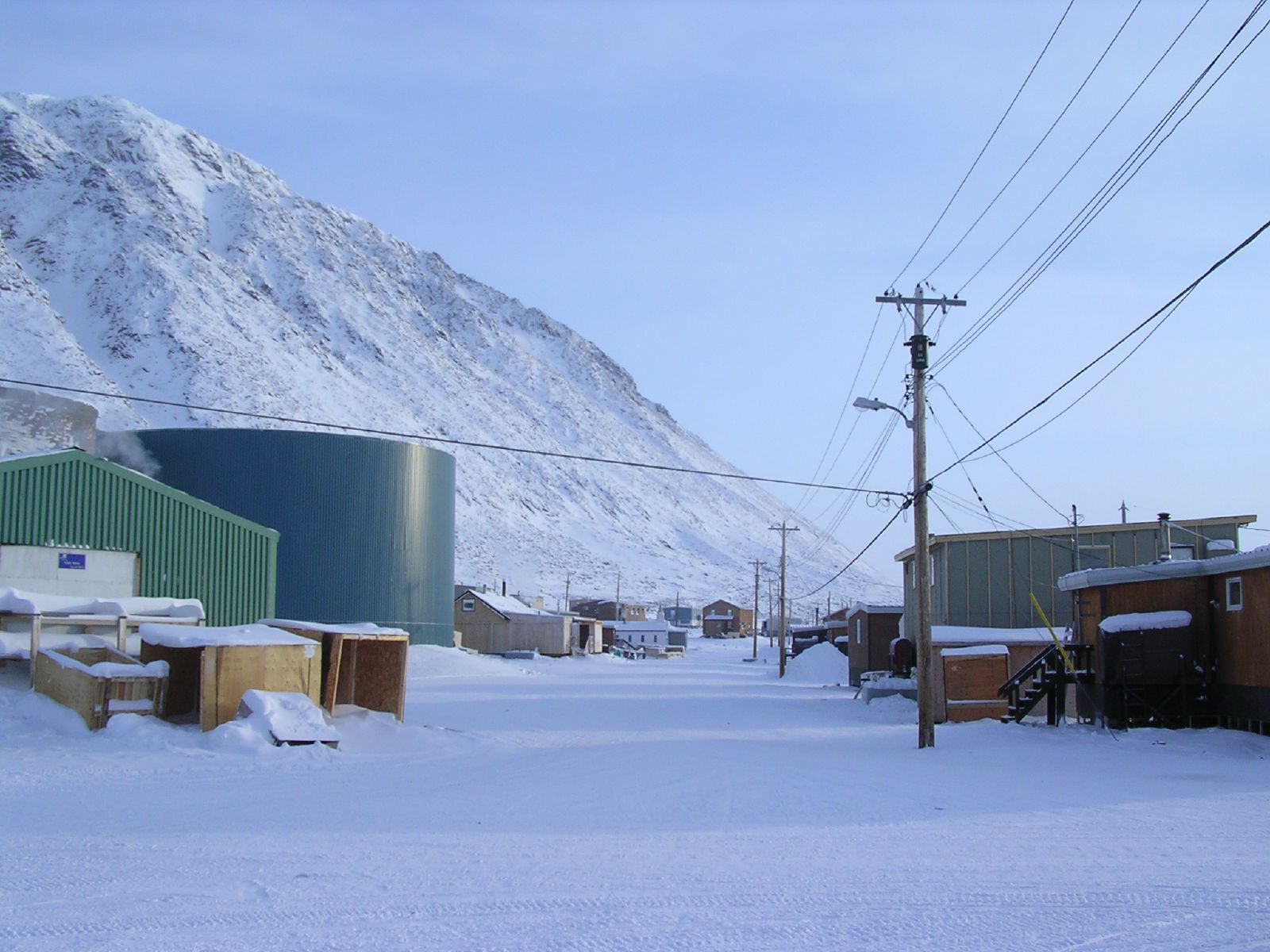
Grise Fiord
Grise Fiord (/ɡriːz fiˈɔːrd/; Inuktitut: ᐊᐅᔪᐃᑦᑐᖅ, romanized: Aujuittuq, lit. 'place that never thaws') is an Inuit hamlet on the southern tip of Ellesmere Island, in the Qikiqtaaluk Region, Nunavut, Canada. It is one of three populated places on the island; despite its low population (144 residents at the 2021 Canadian census),[4] it is the largest community (and only public community) on Ellesmere Island. Created by the Canadian Government in 1953 through a relocation of Inuit families from Inukjuak, Quebec, it is Canada's northernmost public community. It is also one of the coldest inhabited places in the world, with an average yearly temperature of −16.5 °C (2.3 °F).
This article is about the hamlet. For the fjord, see Grise Fiord (Nunavut).Geography[edit]
Located at the southern tip of Ellesmere Island, Grise Fiord is one of three permanent inhabited places on the island. Farther north on the island, Environment Canada has a permanent weather station at Eureka, and at Alert there is a permanent Canadian Forces Base (CFS Alert) and weather station. Grise Fiord lies 1,160 km (720 mi) north of the Arctic Circle, and is the northernmost civilian community in Canada.[15]
Grise Fiord is cradled by the Arctic Cordillera mountain range.
Community and fiord names[edit]
Just to the north of the community is the actual fiord, Grise Fiord, which means "pig inlet" in Norwegian. Otto Sverdrup from Norway so named it during an expedition around 1900 because he thought walruses in the area sounded like pigs.
The Inuktitut name is ᐊᐅᔪᐃᑦᑐᖅ (Aujuittuq), which means "place that never thaws".